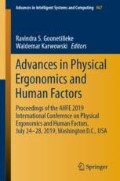Abstract
Pressure ulcer is one of the most common complications in bedridden patients. It may lead to dysfunction of the skin and cause wound infections, even increasing patient mortality through many complications. Mechanics of skin soft tissue play a very important role in clinical practice. In this study, the indentation test was used to obtain Young’s modulus and thickness of the skin soft tissue. This study has three purposes and it is (1) to assess the Young’s modulus and soft tissue thickness of sacral soft tissue among the three groups; (2) to compare Braden scale in the three groups, and; (3) to compare the Young’s modulus, soft tissue thickness of the sacral soft tissue in the three groups, whether there are significant differences or not. These hypotheses were in three groups. These are healed group which are the long-term bedridden patients with healed ulcer wound; long-term bedridden patients with pressure ulcers worsening or unhealed group, and; patients with long-term bedridden without pressure ulcer or the non-ulcer group. The purposes of this study were (1) to assess the Young’s modulus and soft tissue thickness of sacral soft tissue among the three groups, (2) to compare Braden scale in the three groups, (3) to compare the Young’s modulus, soft tissue thickness of the sacral soft tissue in the three groups, and healthy adults, whether there are significant differences. The researchers used the indenter that was assembled by ultrasound probe and load cell controlled by the software LabVIEW program. It is to capture image for evaluating the deformation and force, then Young’s modulus and soft tissue thickness can be estimated. The following results of this study has revealed that (1) there was a statistical significant differences in activities between the Braden scales evaluated by each other; (2) the effective Young’s modulus in unhealed group was the lowest (190.4 ± 60.0 kPa, p < 0.05), and; (3) the soft tissue thickness was the thinnest in the unhealed group (12.6 ± 1.9 mm, p < 0.05). Therefore, the results of this study demonstrated that the effectiveness of the Young’s Modulus of soft tissue and it’s thickness could be both a tool to assess the healing or worsening of pressure ulcers among clinical practices.
Access this chapter
Tax calculation will be finalised at checkout
Purchases are for personal use only
References
Hsu, H.-C.: Pressure sore. J. Chin. Orthopaetics Traumatol. (1), 37–39 (2002)
Chen, N.-W., Chang, T.-H., Chang, S.-H.: A systematic review of nurses’ preventive behavior with regard to pressure ulcers. J. Hungkuang (2012)
Huang, C.L.: Factors related to pressure sore occurrence of in-patients at a teaching hospital. J. Nurs. 40(4), 47–56 (1993)
Braden, B., Bergstrom, N.: A conceptual schema for the study of the etiology of pressure sores. Rehabil. Nurs. 25(3), 105–110 (2000)
Zeng, Y., Yan, Z.: Treatment and prevention of pressure sore. Med. Today (443), 667–673 (2010)
Yu, P.-J., Lee, S.-D., Lin, S.-H.: Validity of assessment tools for risk factors of pressure ulcers in Taiwan. Taiwan Geriatr. Gerontol. 1, 41–47 (2005)
Berlowitz, D.R., Brienza, D.M.: Are all pressure ulcers the result of deep tissue injury? A review of the literature. Ostomy/Wound Manag. 53(10), 34–38 (2007)
Lung, C.-W., Cheng, T.-Y., Li, Y.-J., Liau, B.-Y., Jan, Y.-K.: Development of an intermittent pneumatic compression system to manage soft tissue mechanical properties. In: Duffy, V.G., Lightner, N. (eds.) Advances in Human Factors and Ergonomics in Healthcare: Proceedings of the AHFE 2016 International Conference on Human Factors and Ergonomics in Healthcare, July 27–31, 2016, Walt Disney World®, Florida, USA, pp. 317–325. Springer, Cham (2017)
Acknowledgments
We are grateful for the Ministry of Science and Technology, Taiwan, Kuang Tien General Hospital, Taiwan and Hungkuang University, Taiwan, for financially supporting this research under contracts MOST 107-2622-E-241-003-CC3 and HKKTOH-107-05.
Author information
Authors and Affiliations
Corresponding author
Editor information
Editors and Affiliations
Rights and permissions
Copyright information
© 2020 Springer Nature Switzerland AG
About this paper
Cite this paper
Lung, CW., Jan, YK., Lu, JH., Chen, CL., Kuo, FC., Liau, BY. (2020). The Evaluation of Mechanical Properties of Soft Tissue on Pressure Ulcers Among Bedridden Elderly Patients. In: Goonetilleke, R., Karwowski, W. (eds) Advances in Physical Ergonomics and Human Factors. AHFE 2019. Advances in Intelligent Systems and Computing, vol 967. Springer, Cham. https://doi.org/10.1007/978-3-030-20142-5_36
Download citation
DOI: https://doi.org/10.1007/978-3-030-20142-5_36
Published:
Publisher Name: Springer, Cham
Print ISBN: 978-3-030-20141-8
Online ISBN: 978-3-030-20142-5
eBook Packages: EngineeringEngineering (R0)

